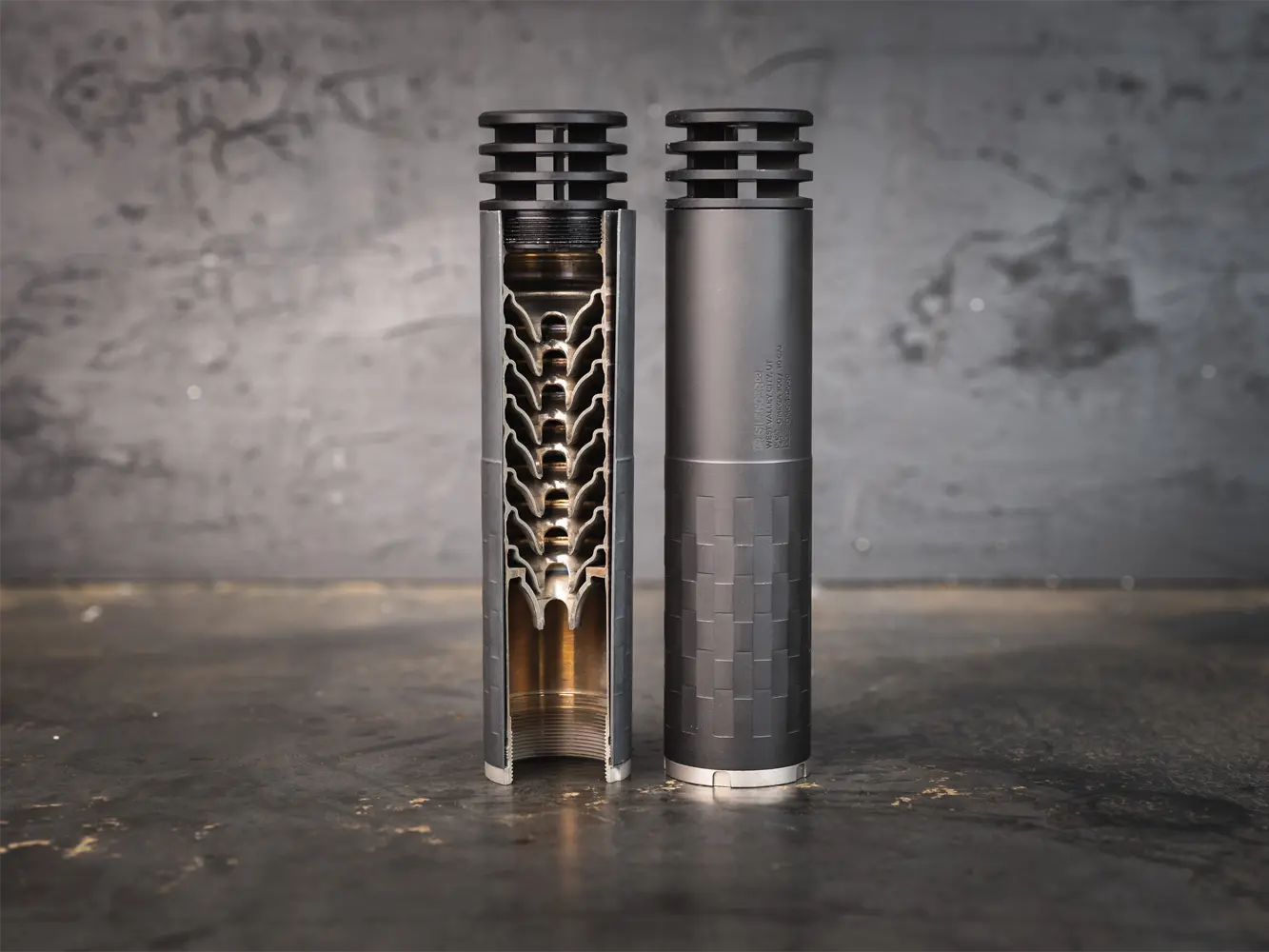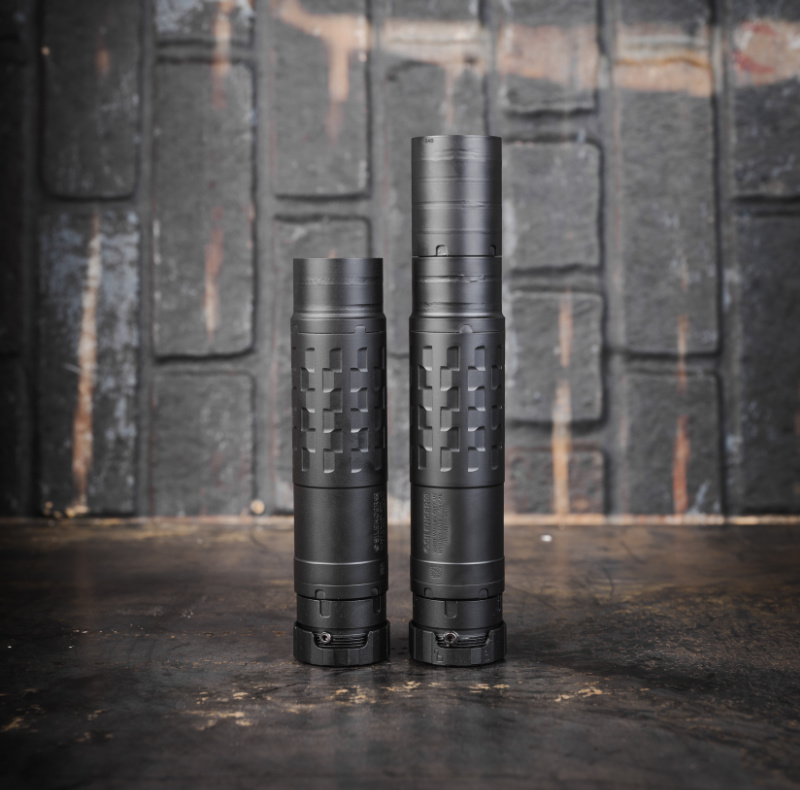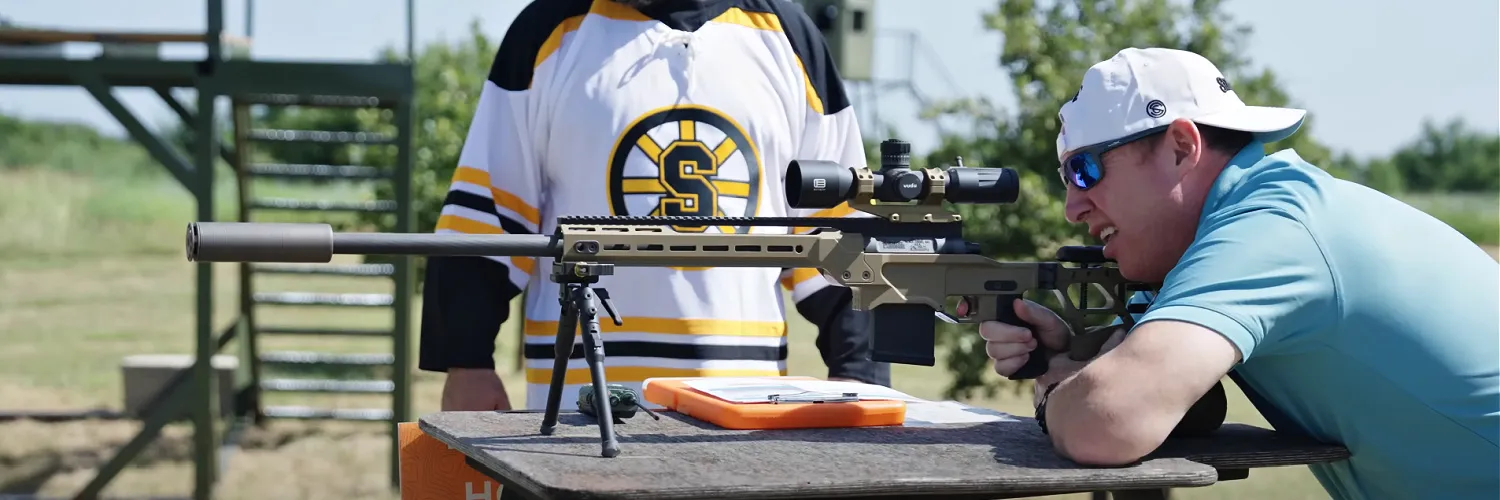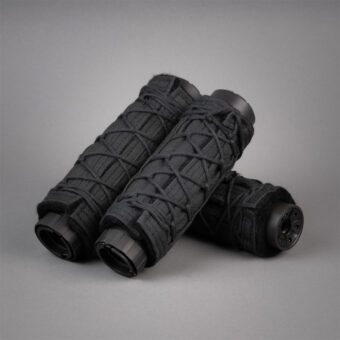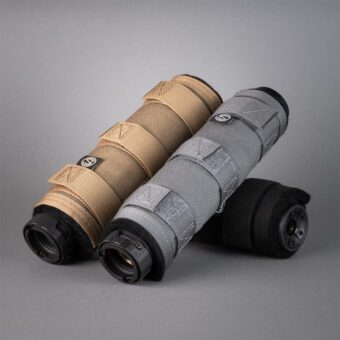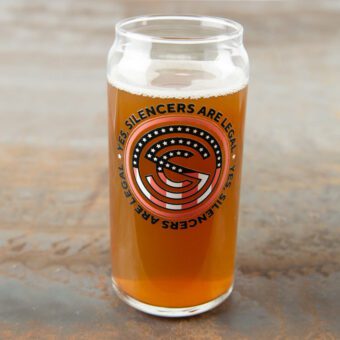Home / All About Silencers / What’s the Difference Between a Silencer and a Suppressor?
What’s the Difference Between a Silencer and a Suppressor?
What’s the Difference Between a Silencer and a Suppressor?
Home / All About Silencers / What’s the Difference Between a Silencer and a Suppressor?
Kat Ainsworth Stevens
Silencer. Suppressor. Muzzle device. There’s a lot of different terminology for various parts in the firearms world, and sometimes it gets confusing. Hollywood seems to enjoy referring to them as “silencers” while you’ll see and hear many people in the gun industry call them “suppressors.” Which is correct? Should you call your device a silencer or a suppressor? Is one more professional or precise than the other?
We’re here to answer your questions on the subject, and it all starts in 1902 with Hiram Maxim.
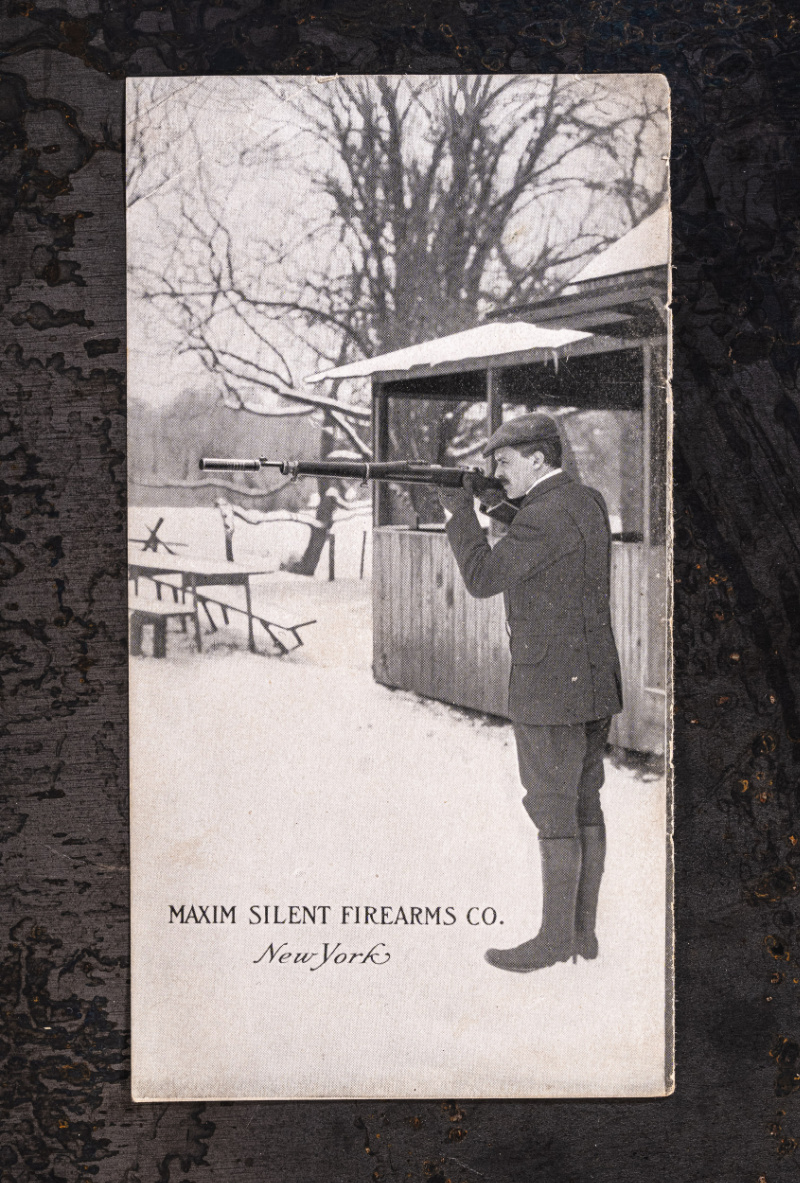
The First Silencer Ever
Hiram Maxim designed the first silencer in 1902 and called it the Maxim Gun Silencer, and in 1909 the device was officially patented. The tubular, barrel-mounted device was created to reduce the decibel levels produced by live fire, and it was the first of its kind produced on the commercial market.

It was Maxim himself who went with the definitive term of silencer — not because the original designs quieted shots more than today’s models do but because of marketing. Extreme marketing methods the style of the era, so it’s possible Maxim slightly overstated the effectiveness of his silencers for a sales boost. It’s also worth noting the anti-gun movement hadn’t yet come to fruition, meaning there wasn’t as much concern over the possible implications of specific terminology.
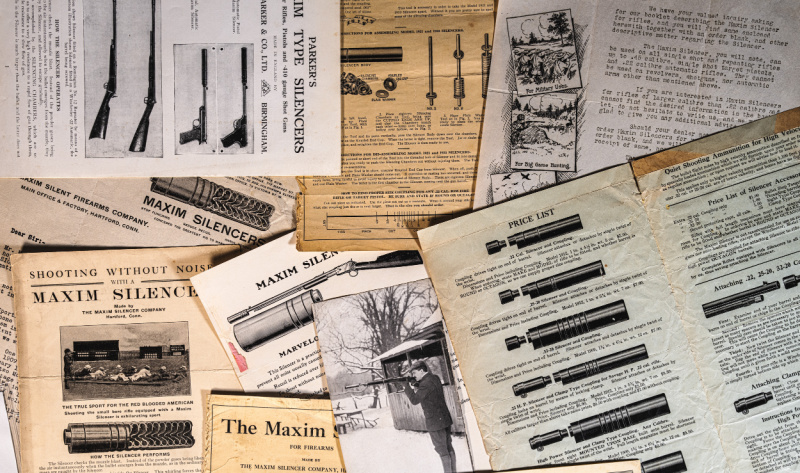
What it comes down to is this: the original terminology used more than a century ago was silencer. So where did the term suppressor come from?
What is a suppressor?
Literally speaking, there’s no difference between a suppressor and a silencer — they’re simply two words for the same device, though the ATF’s legal term is “Silencer.” This is stated on all forms as the Type of Firearm.
The term suppressor started being used due to a variety of factors within the gun industry. As time went by from the invention of that first successful Maxim silencer, the political climate changed, as did the verbiage used for various components.
The term silencer is understandably seen by many as a misnomer because the devices suppress the sound of gunshots rather than eliminating them. This idea that a suppressor turns live fire into nothing more than barely-audible pops is something Hollywood encourages, but it isn’t remotely accurate.
Suppressor quickly became a widely accepted term after its introduction. No one can pinpoint the precise moment the terminology shift took place, but it was and is a logical decision.
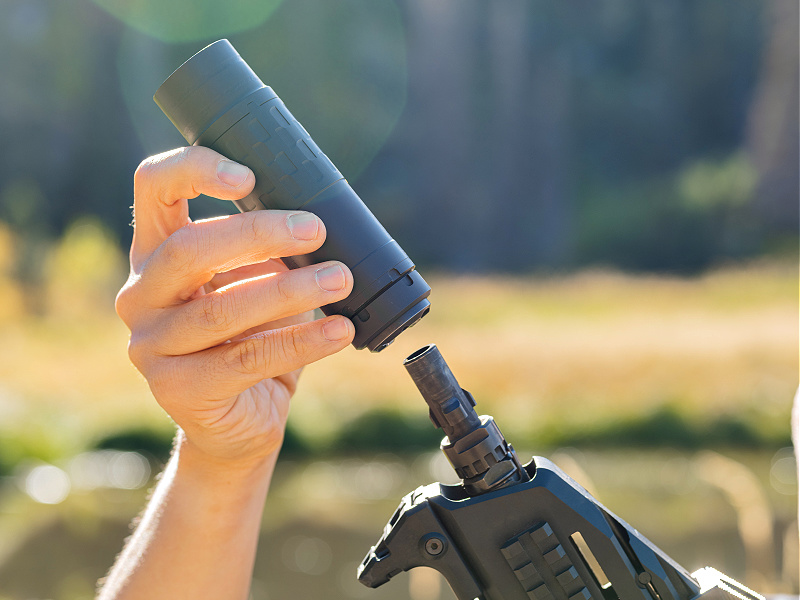
Is my silencer a suppressor?
Yes, your silencer is a suppressor and vice versa. There’s no difference in the device itself, only in the name. Silencer is simply the original term while suppressor is the one that evolved over time to more accurately describe the function of the device in question.
Is every muzzle device a silencer?
No, not all muzzle devices are silencers. The term “muzzle device” is a blanket term for components that mount to the end of a gun’s barrel. Those devices have different purposes and there are almost endless possibilities for their exact design. There are even differences in whether or not a muzzle device screws on or is pinned and welded in place.
First, let’s consider how a silencer works. A silencer is made to significantly reduce the sound produced during live fire. Suppressors — yes, the terms are interchangeable — are typically tubular devices containing baffles designed to redirect the gases and heat of shooting in such a way that the decibel level is lowered.
Silencers succeed in dropping the decibels to a more hearing-friendly level. The exact amount of reduction depends on the specific silencer, model of gun, and caliber. Even the type of ammunition used has an impact on how well the decibels are reduced.
Second, there is another category of muzzle devices that are not made to reduce decibel levels. This includes muzzle brakes, flash hiders—also sometimes called flash suppressors—and compensators. Thread protectors, while similar to other muzzle devices, serve to protect the threaded barrel on your gun from damage, but are not considered muzzle devices.
It’s important not to confuse other muzzle devices with silencers, because they are not the same thing.
Flash hiders, which are also called flash suppressors, are restricted in some places. These devices are made to redirect the gases produced by live fire in a way that reduces the visible flash from the muzzle of the gun. This is a means of protecting your vision and reducing your visible footprint in an area, which can be a huge help to fellow shooters. Flash hiders do not render the gun invisible or take away all evidence of a gun being fired.
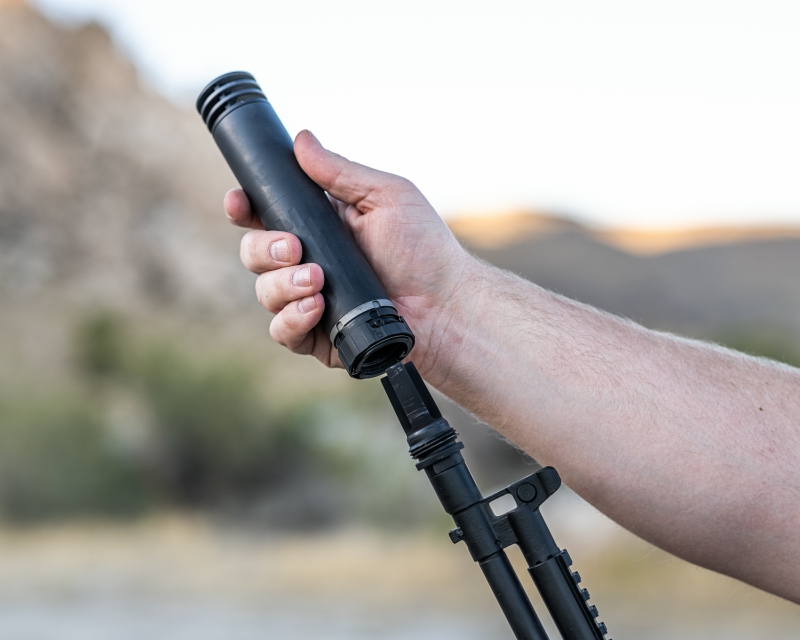
Does it matter what I call my silencer?
Referring to your silencer as a silencer or as a suppressor are both correct. You can simply use the term you prefer. However, remember that not all muzzle devices are silencers, so it’s wise to educate yourself on different terms to ensure accuracy. Some of the most common muzzle devices are:
- Silencer / Suppressor: A device, usually of tubular shape, that usually contains baffles or wipes for the purpose of specifically and significantly reducing the decibel level a gun produces during live fire. A silencer is a device that helps protect your hearing and reduces your auditory footprint on an area.
- Muzzle Brake: A device that mounts to the muzzle end of a barrel for the purpose of redirecting gases in a way that somewhat mitigates felt recoil and, in turn, muzzle rise. This can lead to improved accuracy. The specific shape and design of the muzzle brake has an impact on its effectiveness. Some of them are tunable so they can work at an optimal level with specific guns and loads.
- Flash Hider/ Flash Suppressor: A device that mounts to the muzzle end of the barrel for the purpose of redirecting or dispersing gases in a way that slightly reduces the brightness of a live-fire flash.
- Compensator: A device that mounts to the muzzle end of a barrel for the purpose of redirecting gases to significantly reduce muzzle rise with the goal of improving accuracy and speeding up target acquisition.
Not all devices are the same, and even the devices within a category have sub-categories to consider. For example, there are numerous types of muzzle brakes, all of which perform to varying degrees. There are also myriad silencers on the market, some as fixed, one-piece silencers and others as modular silencers, engineered so that the length can be varied as needed (which also affects its decibel-reducing levels).
Whether you call it a gun silencer or a suppressor, it’s an excellent device to protect your hearing, reduce your sound imprint on an area, and create a more pleasant shooting experience overall. Silencers are fantastic additions to your firearms collection and can be excellent tools for teaching, hunting, and general range use.


